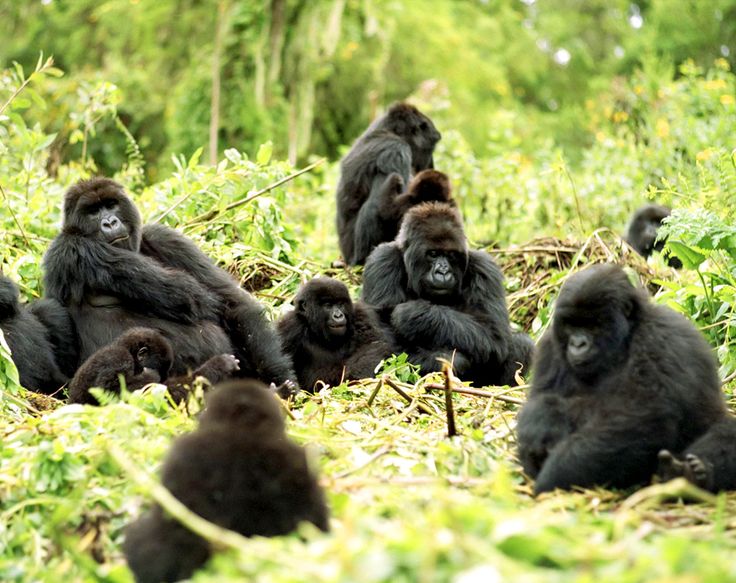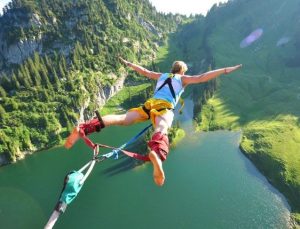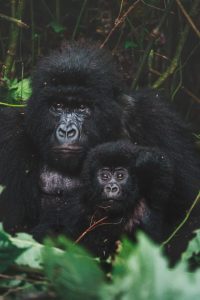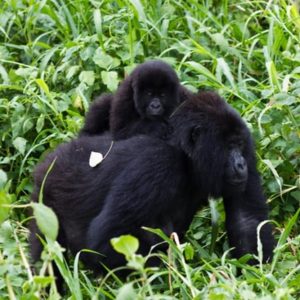If you’ve ever dreamed of trekking through the misty mountains of Uganda or Rwanda to come face-to-face with a wild mountain gorilla, you’ve likely come across the term “gorilla permit.” And if you’ve done some research, you probably noticed something else—the price tag. Gorilla permits often cost hundreds of dollars per person, leading many travelers to ask: “Why is a gorilla permit so expensive?”
The short answer is that the cost is more than just a ticket for a wildlife experience. The permit funds conservation, community development, research, security, and sustainability. Below, we break down the real reasons behind the price of a gorilla trekking permit and why it’s a necessary investment in one of the world’s rarest and most protected species.
What Is a Gorilla Permit?
A gorilla permit is an official document issued by a country’s wildlife authority like the Uganda Wildlife Authority (UWA) or Rwanda Development Board (RDB) that allows a person to trek and spend one hour with a habituated group of mountain gorillas in the wild.
Permits are mandatory, strictly regulated, and limited in number to minimize environmental impact and stress on the gorillas.
Gorilla Permit Costs in 2025–2026
- Uganda (Bwindi & Mgahinga): Approx. $800 per person
- Rwanda (Volcanoes National Park): Approx. $1500 per person
- DR Congo (Virunga or Kahuzi-Biega): Ranges from $400 to $500, but availability can be limited due to safety concerns
While these figures may seem steep, the value of a gorilla permit lies in what it enables, protects, and preserves.
1. Gorilla Conservation Is Costly and Ongoing
Mountain gorillas are critically endangered species with an estimated global population of just over 1,000 individuals. They are found only in three countries Uganda, Rwanda, and the Democratic Republic of Congo. Why Is a Gorilla Permit Expensive?
Protecting these rare animals requires:
- Veterinary care and health monitoring
- Anti-poaching patrols
- Habitat preservation and forest patrols
- Scientific research and data collection
Each of these efforts costs millions of dollars annually, and the gorilla permit system ensures that tourism funds the majority of that work—not donations or government subsidies alone.
2. Limited Permits Maintain Low Impact
Only 8 tourists are allowed per gorilla family per day, and visits are restricted to 1 hour. This protects the animals from overexposure to humans and minimizes disease transmission, stress, and disruption to their natural behavior.
This low-volume, high-value model ensures:
- A better quality of experience for visitors
- A reduced ecological footprint
- The long-term sustainability of gorilla tourism
By keeping numbers low and experiences exclusive, the permit price stays high but with purpose.
3. Local Communities Receive a Share
Gorilla tourism plays a key role in uplifting local communities. In countries like Uganda and Rwanda, a portion of the permit revenue is returned to local communities living around the parks. This can include:
- Schools and education projects
- Health clinics and clean water systems
- Infrastructure like roads and electricity
- Employment through guiding, portering, and hospitality
This model builds strong support for conservation among local residents, who are more likely to protect gorillas if they see direct benefits from tourism.
4. It Creates Employment and Sustainable Livelihoods
Thousands of people in East Africa work in tourism roles that exist only because of gorilla trekking. These include:
- Park rangers and trackers
- Wildlife veterinarians
- Guides and drivers
- Porters and camp staff
- Local artists and performers
Without tourism—and without gorilla permits—many of these jobs would not exist. The higher the permit price, the better the wages, training, and support these professionals receive.
5. Research and Gorilla Habituation
Not all gorilla groups are open for tourism. Each group must go through a long-term habituation process, which often takes 2 to 3 years. This process requires scientists, rangers, and field researchers to work with the gorillas daily until they become accustomed to human presence.
Your permit helps fund this process and supports continued scientific research, which is crucial for:
- Gorilla health monitoring
- Understanding social behaviors
- Managing human-wildlife interaction risks
Without this work, gorilla trekking wouldn’t be possible at all.
6. Security and Park Infrastructure
Gorilla habitats are often in remote, forested, and mountainous areas that require:
- Constant ranger patrols for safety
- Well-maintained trekking trails
- Emergency response teams
- Transportation and communication networks
The cost of building and maintaining such infrastructure in national parks is high. A portion of every permit goes toward ensuring that both tourists and wildlife remain safe.
7. Gorilla Permits Limit Mass Tourism
In many places around the world, tourism has led to mass exploitation of animals. Gorilla permits are designed to prevent this from happening. High permit fees discourage mass-market tourism and instead attract conscious travelers who:
- Value conservation
- Respect nature
- Understand the experience is a privilege, not a product
This model helps maintain the authenticity and exclusivity of the gorilla trekking experience, ensuring it remains sustainable for decades to come.
8. Supporting Gorilla Population Growth
Thanks to tourism-funded conservation efforts, mountain gorilla populations have seen slow but steady growth in the past decade. According to recent surveys, their numbers have increased in areas like Bwindi and the Virunga Massif.
This success story is rare in the world of endangered species and the gorilla permit is at the heart of it.
It’s More Than a Permit
Yes, a gorilla permit is expensive. But it is also one of the few wildlife-related expenses in the world where the cost has a direct, measurable impact on conservation, community well-being, and environmental sustainability.
When you buy a gorilla permit, you are not just purchasing a wildlife encounter. You are:
- Financing the survival of one of the world’s rarest animals
- Empowering communities to thrive with tourism
- Protecting ancient forests and fragile ecosystems
- Creating meaningful, responsible travel
So while the initial cost may feel high, the return is profound. And for many travelers, the moment of sitting in silence, just meters away from a silverback gorilla, is worth every penny—and more.
If you’re considering gorilla trekking in 2025 or 2026 and need help finding the right destination, permits, or itinerary, feel free to reach out. Planning early ensures the best experience and maximizes the value of your investment.




